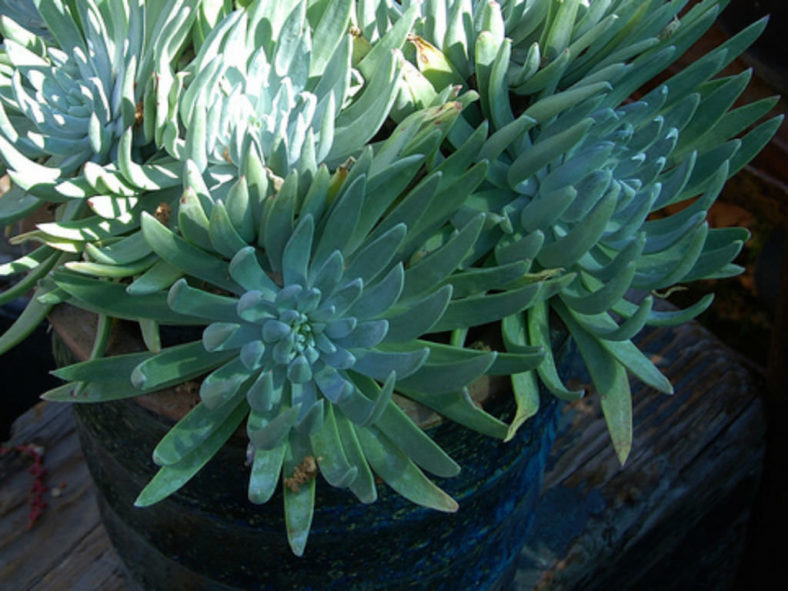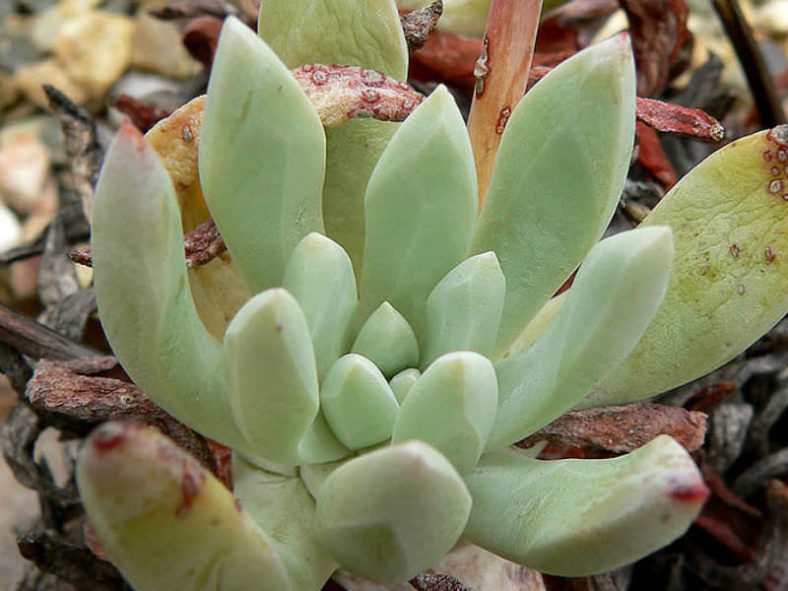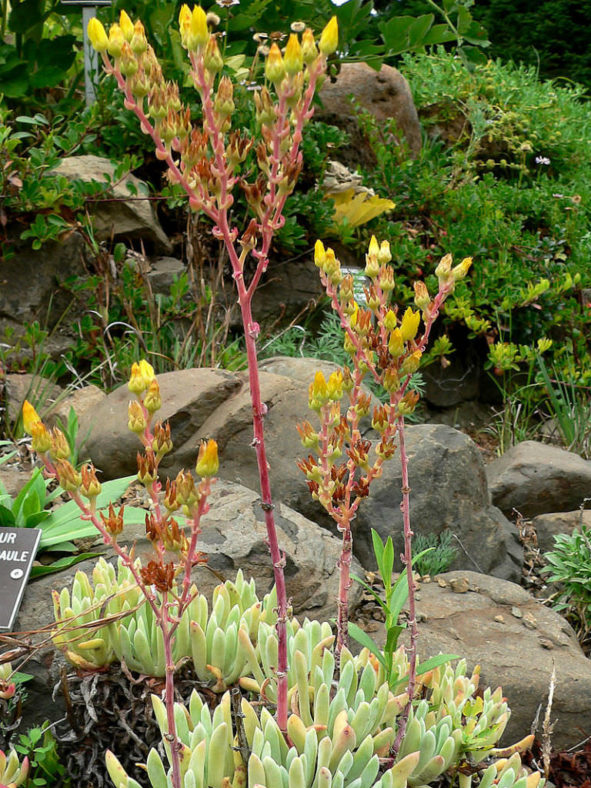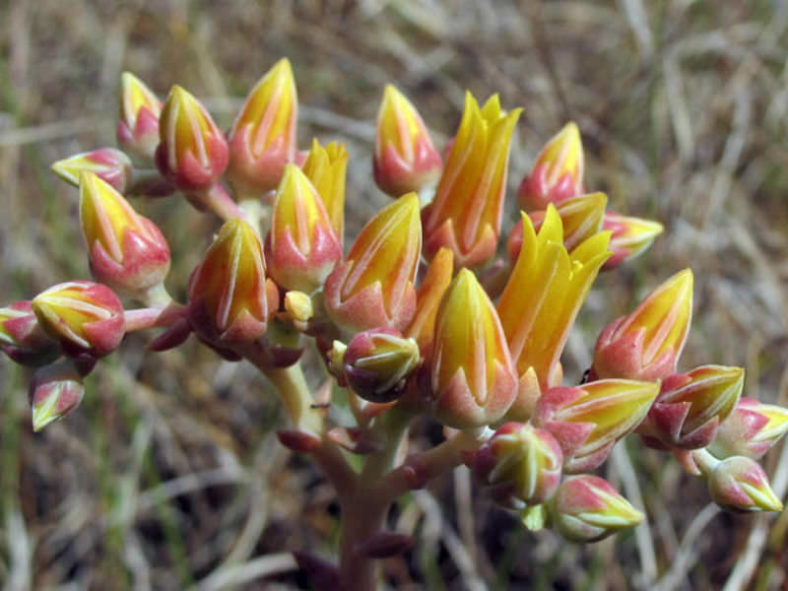Scientific Name
Dudleya caespitosa (Haw.) Britton & Rose
Common Name(s)
Sea Lettuce, Sand Lettuce, Coast Dudleya, Coastal Dudleya, Bluff Lettuce
Synonym(s)
Cotyledon caespitosa, Echeveria caespitosa
Scientific Classification
Family: Crassulaceae
Subfamily: Sempervivoideae
Tribe: Sedeae
Genus: Dudleya
Etymology
The specific epithet "caespitosa" (pronounced "kess-pi-TOH-suh") means "turf, grass (attributive)." It refers to the growth habit of this species, which forms dense clumps, often spreading into large caespitose colonies in its native habitat.
Origin
Dudleya caespitosa is endemic to California. It grows along the coastline from San Francisco to Los Angeles, including the Channel Islands.
Description
Dudleya caespitosa is a succulent plant that forms rosettes of green or glaucous leaves, often reddish along the edges and tips. The rosettes can grow up to 12.8 inches (32 cm) in diameter and produce offsets, forming small, lax, or cushion-shaped groups, sometimes with more than 150 rosettes, reaching a diameter of up to 24 inches (60 cm). The leaves vary in shape from lance-oblong or oblong to oblanceolate, with generally acute tips. They can measure up to 8 inches (20 cm) in length and up to 0.8 inches (2 cm) in width.
The flowers are bright yellow, rarely red or orange, and appear in clusters in inflorescences with several branches from late spring to early summer. The inflorescences can grow up to 2 feet (60 cm) tall.

Hardiness
USDA hardiness zones 9b to 11b: from 20°F (-3.9°C) to 50°F (10°C).
How to Grow and Care
Most of the various habitats Dudleyas occupy become dry in summer. Therefore, cutting off water to Dudleyas in your garden during the summer is essential. Plants grown in sandy soils or containers are exceptions. They will accept infrequent summer watering as long as the soil drains well. The onset of fall or winter rains reawakens Dudleyas from drought-induced dormancy. Their shriveled leaves plump up quickly, growth resumes, and flowering occurs during the following spring or summer. These plants are amazingly resilient. If a portion of a colony sloughs off a cliff face or is uprooted by a burrowing animal, it can persist for months until soil contact is re-established. Species that naturally grow on ocean bluffs are also salt-spray tolerant.
Dudleyas have their share of disease and pest problems. If you can prevent Argentine Ants from introducing mealybugs or aphids to your Dudleyas, they will be healthier. Mealybugs nestle in the deep recesses of the leaves, and their feeding weakens the plants.
Learn more at How to Grow and Care for Dudleya.
Links
- Back to genus Dudleya
- Succupedia: Browse succulents by Scientific Name, Common Name, Genus, Family, USDA Hardiness Zone, Origin, or cacti by Genus
Photo Gallery
Click on a photo to see a larger version.


